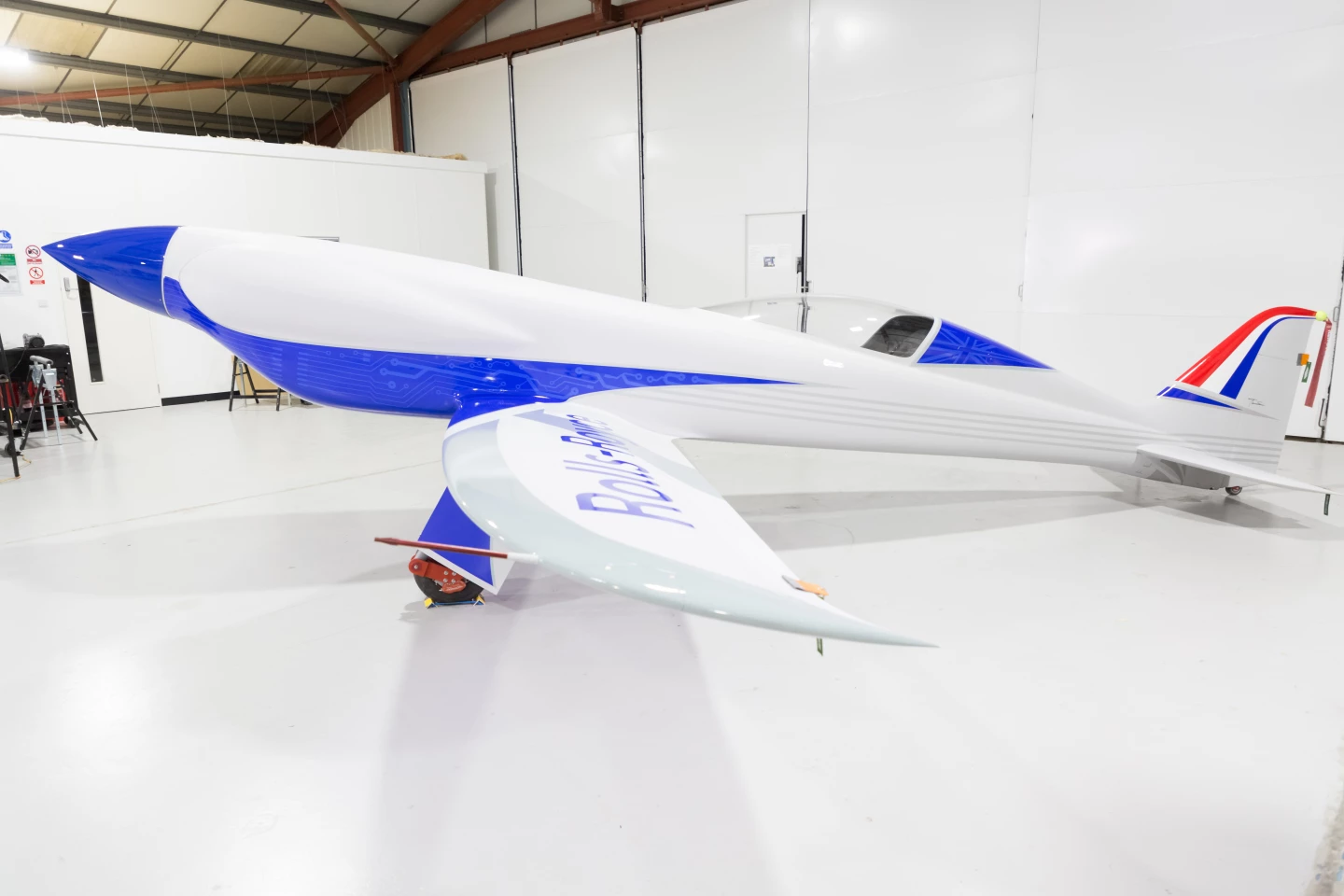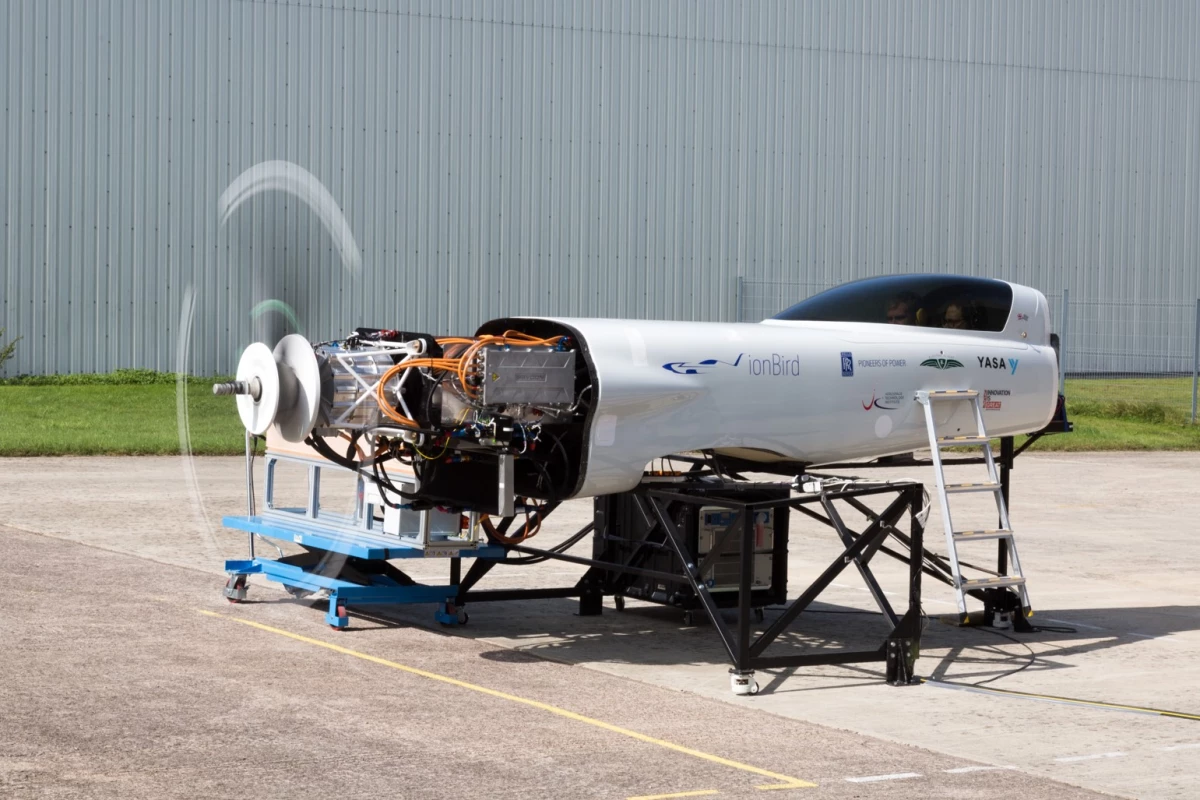Last year, we heard how Rolls-Royce was developing what it claims will be the world's fastest electric airplane, the ACCEL. Now, the company has announced that it has completed ground testing of the technology that will be used in the aircraft.
To recap our previous coverage, plans call for the single-seater ACCEL to incorporate three axial 750R electric motors in its 500-hp powertrain. Power will be provided by a battery pack consisting of over 6,000 individual cells, offering a range of 200 mi (320 km) on a single charge.
Rolls-Royce claims that the plane's top speed should be over 300 mph (480 km/h).
The technology has now been tested in a full-scale replica of the aircraft's core, called the ionBird. This name pays tribute to the term "iron bird," which describes the propulsion-testing rigs traditionally used in the development of conventional aircraft.

The ground testing involved running the propeller up to its full speed of approximately 2,400 rpm, optimizing the performance of the system, and gathering data for further analysis.
ACCEL should be making its first flight later this year, with its attempt at a record-breaking flight scheduled for early next year.
"The completion of ground-testing for the ACCEL project is a great achievement for the team and is another important step towards a world record attempt," says Rob Watson, director of Rolls-Royce Electrical.
The ionBird can be seen in action, in the video below.
Source: Rolls-Royce





